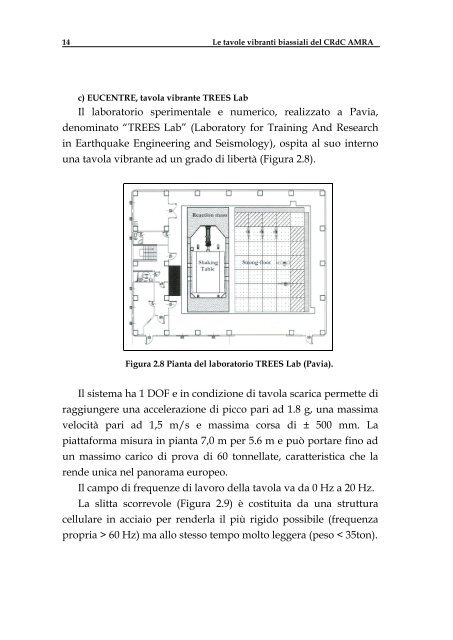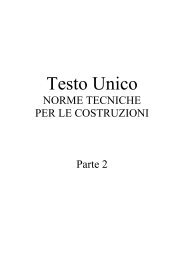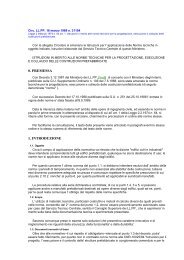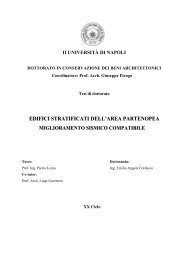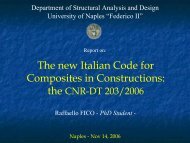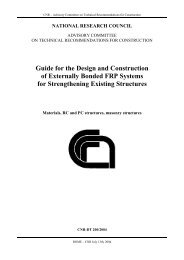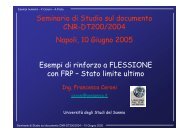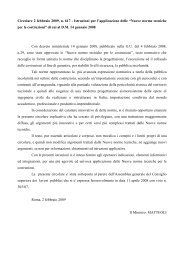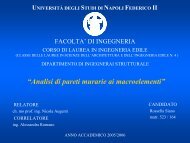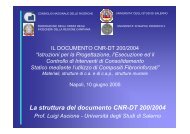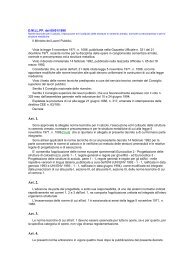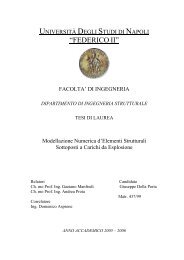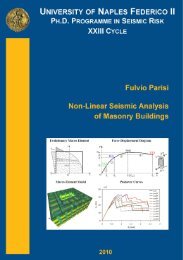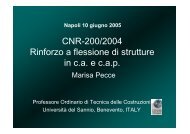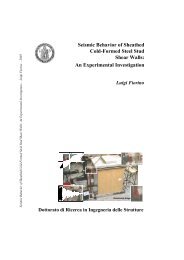Le tavole vibranti biassiali del CRdC-AMRA - Dipartimento di Analisi ...
Le tavole vibranti biassiali del CRdC-AMRA - Dipartimento di Analisi ...
Le tavole vibranti biassiali del CRdC-AMRA - Dipartimento di Analisi ...
Create successful ePaper yourself
Turn your PDF publications into a flip-book with our unique Google optimized e-Paper software.
14 <strong>Le</strong> <strong>tavole</strong> <strong>vibranti</strong> <strong>biassiali</strong> <strong>del</strong> <strong>CRdC</strong> <strong>AMRA</strong><br />
c) EUCENTRE, tavola vibrante TREES Lab<br />
Il laboratorio sperimentale e numerico, realizzato a Pavia,<br />
denominato “TREES Lab” (Laboratory for Training And Research<br />
in Earthquake Engineering and Seismology), ospita al suo interno<br />
una tavola vibrante ad un grado <strong>di</strong> libertà (Figura 2.8).<br />
Figura 2.8 Pianta <strong>del</strong> laboratorio TREES Lab (Pavia).<br />
Il sistema ha 1 DOF e in con<strong>di</strong>zione <strong>di</strong> tavola scarica permette <strong>di</strong><br />
raggiungere una accelerazione <strong>di</strong> picco pari ad 1.8 g, una massima<br />
velocità pari ad 1,5 m/s e massima corsa <strong>di</strong> ± 500 mm. La<br />
piattaforma misura in pianta 7,0 m per 5.6 m e può portare fino ad<br />
un massimo carico <strong>di</strong> prova <strong>di</strong> 60 tonnellate, caratteristica che la<br />
rende unica nel panorama europeo.<br />
Il campo <strong>di</strong> frequenze <strong>di</strong> lavoro <strong>del</strong>la tavola va da 0 Hz a 20 Hz.<br />
La slitta scorrevole (Figura 2.9) è costituita da una struttura<br />
cellulare in acciaio per renderla il più rigido possibile (frequenza<br />
propria > 60 Hz) ma allo stesso tempo molto leggera (peso < 35ton).


